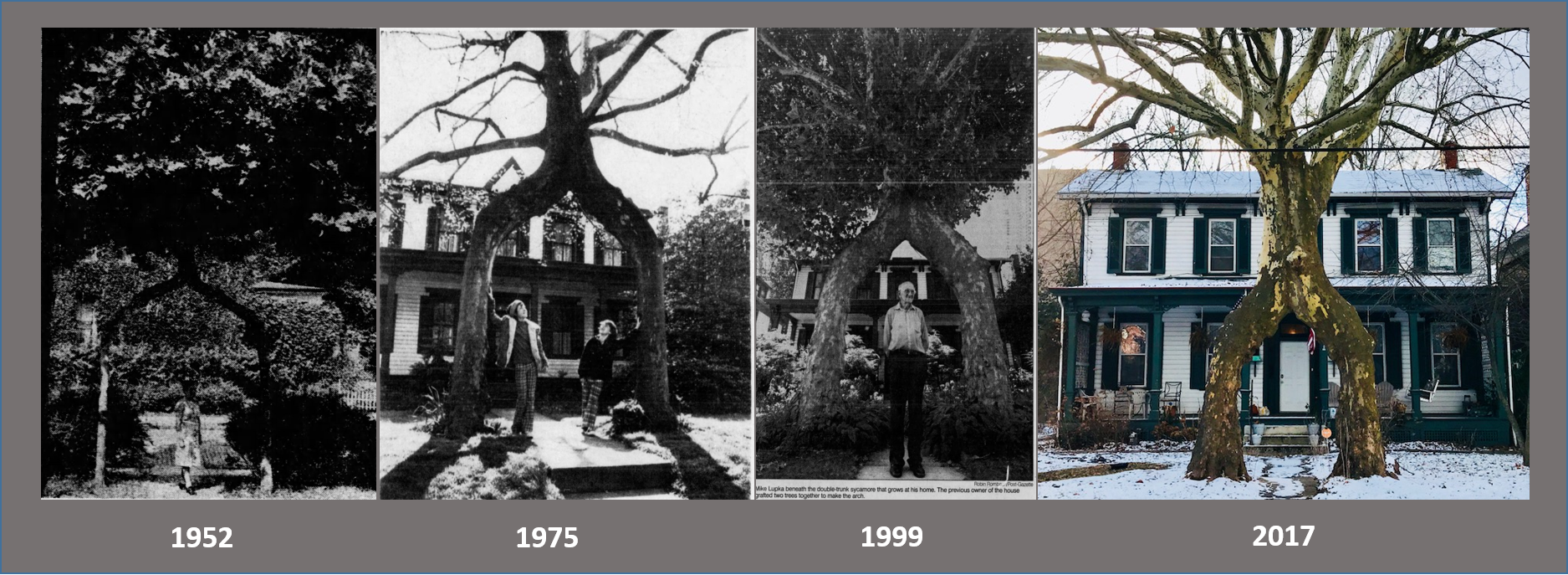In partnership with the home's current owner, Preservation Pittsburgh has nominated the Sheraden Homestead to become a City Historic Landmark.
The house is significant for a number of reasons but most of all for the people who made it their home. The house is Italianate in design and was constructed between 1875-1885 on part of a tract of 122 acres that William Sheraden, a farmer from Ohio, purchased in 1857 for $9,000 in what was then Chartiers Township. While the Sheraden family initially lived in an older stone farmhouse on the land, the Sheraden Homestead we have today was constructed later during a period of prosperity for the family. The land around Sheraden's farm would soon become known as 'Sheraden' or 'Sheradenville' in honor of the farmer and his family. The borough of Sheraden was created from part of Chartiers Township in 1894, and became part of the city of Pittsburgh in 1907.
Sheraden's property produced hay, butter, corn, oats, rye, potatoes, and apples which he used to sell in the Diamond Market (current Market Square) downtown. In the late 19th century Sheraden began to subdivide his land for residential development and after he passed in 1900, other family members continued the residential development that he began and the house was eventually moved and re-oriented to make way for the creation of Bergman Street itself. Perhaps most notably a grandson, William Sheraden Bockstoce, constructed houses in the neighborhood and was a building contractor for much of his life. Bockstoce was also a nationally-renowned horticulturalist, famed for his work on creating several new breeds and hybrids of peonies. He is also responsible for the distinctive conjoined sycamores that stand in front of the house today.
An interview in a Post-Gazette article describes the process by which the tree came to be:
They got two old-fashioned washtubs... and placed one on each side of the front walk. Initial efforts to create the double-trunked sycamore failed. Instead of staying upright when they were first grafted, the trunks toppled over. Piping then was brought in, and the trees were fastened to the pipe with clothesline and encouraged to grow toward each other. When the two trunks were sturdy enough to stand on their own, the pipping came off. The tree grew upward from the arch's high point, uniting into one trunk.
William S. Bockstoce was the last Sheraden decedent to live in the house and while many have contributed to the house's rich history, it is the current owner who is helping to recognize its significance to the neighborhood and the city of Pittsburgh. We at Preservation Pittsburgh want to thank them for their partnership and for helping to recognize an exceptional piece of Pittsburgh's history.
To learn more about the Sheraden Homestead, you can access our nomination here.
If you would like to lend your support for the designation, please email the City's Historic Preservation Planner, Sarah Quinn at sarah.quinn@pittsburghpa.gov or come to the Historic Review Commission's public hearing on Wednesday, February 7th at 1pm, 200 Ross Street.
If you'd like to help our landmarking efforts, please consider donating to our Landmarking Fund.





